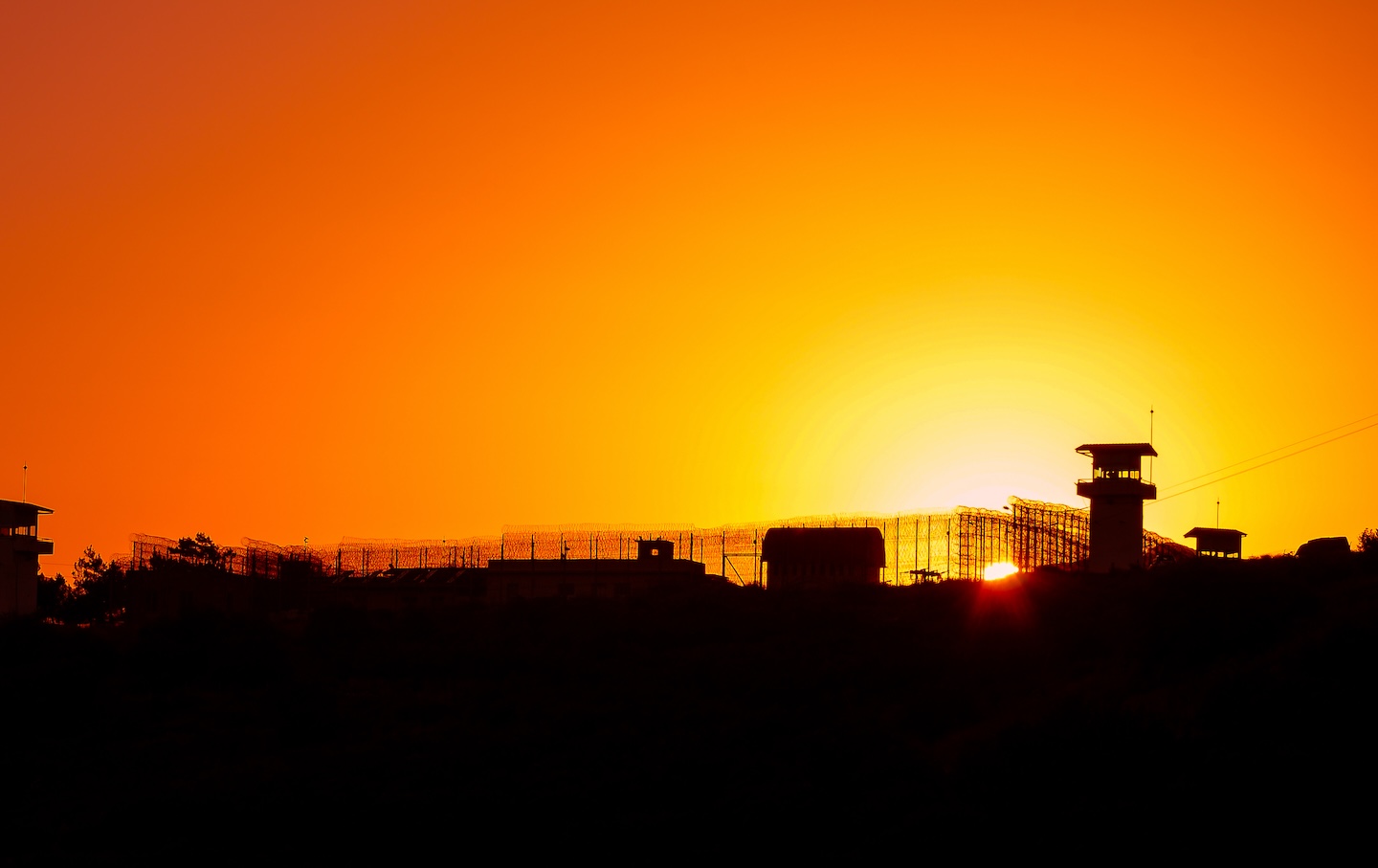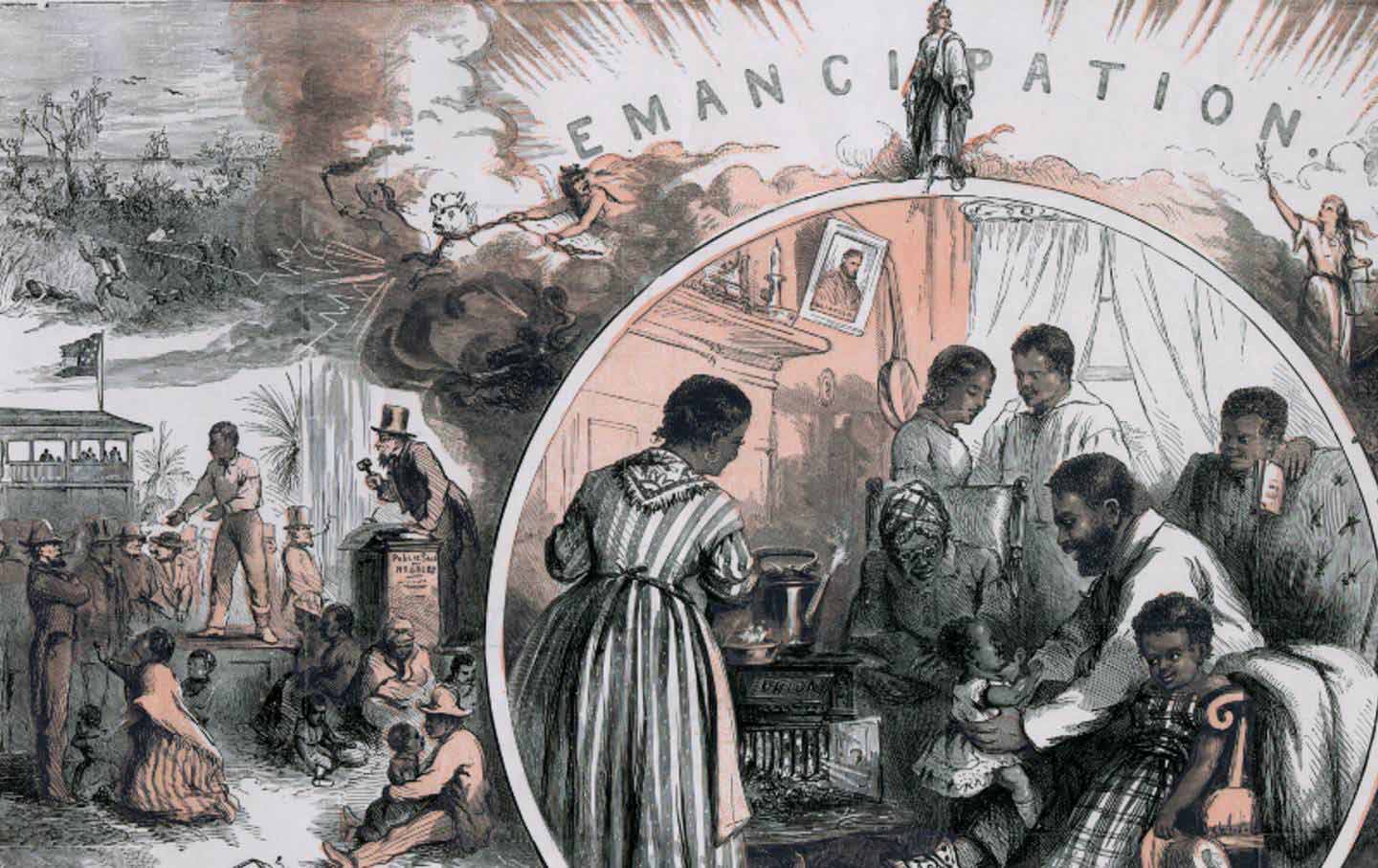The Scorching Temperatures Are Turning Prison Cells Into Furnaces
As the death toll due to extreme heat rises, incarcerated people are concerned that their cells could become their coffins.

Temperatures in Chowchilla, California, have soared to 110 degrees in recent weeks, as the entire country remains gripped by a historic heat wave. On July 4, temperatures reached 109 degrees. That day, according to women in her housing unit, 47-year-old Adrienne Boulware waited for her medications in the yard at the Central California Women’s Facility, the second largest women’s prison in the nation. While those in line wait under an awning, they are still outside and exposed to the elements, including the scorching heat.
Afterward, Boulware attempted to cool off by showering. Shortly after, women in her unit said that she became incoherent. She was unresponsive when her roommates asked if she was okay. Then, according to their accounts, she dropped to the ground and her legs began shaking. According to the California Department of Corrections and Rehabilitation, she was transported to a hospital. She died two days later.
As climate change warms the planet to record-breaking temperatures, jails and prisons have become summer broilers. Behind bars, extreme heat days (or days that fall within the hottest 10 percent of days for a particular location) have led to a 3.5 percent increase in deaths and, in Western states like California, an 8.6 percent increase. In California, 16 percent of the prison population is over age 55; their increased age and accompanying medical conditions make people even more vulnerable to extreme temperature-related illnesses.
Liz, who has been imprisoned for three decades and asked that only her first name be published, knows firsthand how summers have gotten hotter in Chowchilla.
“The heat is lasting longer,” she told The Nation. “Ten years ago, you looked forward to night time. You knew you would get a break from the heat. It would cool off.” Now, however, the cells remain hot and humid. “It’s like Chowchilla has its own heat dome,” she said.
For years, the California Coalition for Women Prisoners, an advocacy group that works with people in the women’s prisons, has heard complaints about scorching heat and minimal mitigation. This past holiday weekend, coalition advocates received phone calls and electronic messages from people inside CCWF describing the excessive heat and begging for help. Coalition organizer Leesa Nomura, who had previously been incarcerated at CCWF, read excerpts from some of the dozens of urgent messages to The Nation: “We can’t breathe, we’re sick, we’re throwing up,” she read. “These are all symptoms of heat stroke and heat exhaustion,” she noted.
The prison utilizes evaporative coolers, known colloquially as swamp coolers, which recirculate a room’s air across a wet pad to cool an area. Swamp coolers are designed to cool smaller spaces, such as rooms in houses and not sprawling dormitories or concrete cellblocks. Water from the sink is lukewarm and, while water from the housing unit’s water fountains is slightly cooler, it warms quickly in a cup or water bottle.
“We’re constantly getting e-mails and updates of temperatures in the rooms,” said Nomura. She said that the electronic messages she received noted that one cell was 95 degrees at 6 pm. Another reached 100 degrees on July 8 and, by evening, had only dropped to 96 degrees.
Women measure their cells’ temperature using the temperature gauges built into their commissary-bought clocks.
Every California prison has a heat plan coordinator, who monitors heat-related conditions, temperatures both inside and outside, and the number of incarcerated people who have heat-related illnesses. According to CDCR’s heat contingency plans, when outdoor temperatures exceed 90 degrees, outdoors time is limited to 30 minutes for traveling to classes, programs, and job assignments for those who are identified as vulnerable to heat stress. Recreation time is moved to indoor areas, such as gyms, dayrooms (or rooms where women can socialize), and classrooms.
If indoor temperatures exceed 90 degrees, the second stage of the heat plan requires that vulnerable people be moved to air-conditioned spaces, such as offices and classrooms, and that nurses trained to recognize heat-related illnesses tour the housing units more frequently to monitor health. Should indoor temperatures exceed 95 degrees, the third stage requires that nursing staff check on incarcerated people at least every two hours for heat-related illnesses.
But those inside the prison report that staff rely on temperatures in the hallways, which are cooler than inside the cells, where the sun blazes through the window all day. (In prisons, people are not allowed to cover their windows.)
For instance, according to CDCR heat logs, on July 4, 2023, temperatures in one housing unit only reached 82 degrees. But that day, which was the hottest July 4 on record, outside temperatures reached 99 degrees. At an internal meeting later that year, prison officials marked the issue as resolved, yet The Nation spoke to several women who stated that staff continue to rely on hallway temperatures and these lower temperatures fail to trigger the requirements of the heat prevention plan. None had seen nurses making rounds since the Covid-19 pandemic lockdowns.
Liz also noted that, when an incarcerated person dies, their peers are supposed to have access to mental health counseling. After Boulware’s death, Liz helped one of her friends file a request for mental health counseling. No clinician ever came to see her.
In an e-mail to The Nation, CDCR public relations officer Mary Xjimenez confirmed that Boulware was transported to an outside medical facility and died on July 6. She stated that the death appeared to be the result of an ongoing medical condition and not the heat, but the coroner has yet to determine an official cause of death. She also stated that prison officials are closely monitoring the heat wave and “are paying special attention to medically vulnerable incarcerated people, and will be providing additional water, ice, cooling areas, and information to our staff and incarcerated population on ways to prevent heat-related illnesses throughout this heat wave.”
But that’s not what five women I spoke to in different units at the prison experienced after Boulware’s death. That Sunday, women reported that some of their vents emitted hot air, turning their cells into furnaces. Others reported that they were not being provided ice.
The extreme heat caused 45-year-old Shawndra Boode to repeatedly vomit. Like Boulware, she attempted to shower in an attempt to cool off, but that did not help. She reported her heat-induced illness to the officer on duty at her housing unit. He telephoned medical staff. Without examining or even speaking to Boode, the nurse on duty instructed the officer to tell Boode to hydrate.
Popular
“swipe left below to view more authors”Swipe →Boode takes medications for migraines, which makes her more vulnerable to heat exhaustion. “I want to claw my clothes off. I can’t breathe,” she told The Nation.
She isn’t the only one. Boode’s unit houses many older people who are also struggling in the extreme heat. No nurses have conducted rounds on the housing unit, she said. “People have been sick on the unit and they haven’t come.”
Prison staff have accommodated changing her work schedule to the cooler morning hours and housing unit officers are allowing women to keep their cell doors open during the day. But, until she spoke with The Nation, no one had informed Boode that, as a person on heat-sensitive medications, she can request to be brought to an air-conditioned room to cool off. On Monday evening, her cell was 86 degrees even with her door open and a fan circulating the air.
The prison has put information about the heat wave and warnings about heat exhaustion on the tablets issued to every incarcerated person. But Boode, who is a peer health mentor, says that is not enough to prevent more heat-related illnesses.
“A lot of people don’t look at [the tablet notifications],” she pointed out. Instead, prison officials should also ensure that flyers are posted in every unit and assign peer health mentors to visit each of the prison’s housing units to describe the symptoms of heat exhaustion and heat stroke and answer questions. But neither has happened, she said.
Noting that California spends millions on incarceration, Nomura pointed out that basic human necessities, such as hydration and nutrition, remain continually ignored and that, each summer, it seems that advocates, including currently and formerly incarcerated women, are fighting the same campaign to ensure that they survive yet another sweltering summer.
“I want to challenge legislators to stop funneling money into these institutions unless you’re going to challenge CDCR into repairing them so that these are not death chambers,” she said.
Boulware was one of Liz’s earliest mentors when she first entered prison, teaching her how to advocate for herself and helping her find programs that would help her. Boulware’s largesse wasn’t limited to that one scared young woman. “She was very kind to everyone,” Liz described. “She always made herself available.”
Boulware’s death brings home Liz’s fears that her cinderblock cell could become her coffin. “My fears are to continue to suffer through heat without something as simple as ice to cool my body temp from the inside, that CDCR never changes from swamp coolers to AC, that people continue to pass from being hot, that I die from heat,” she said.
We cannot back down
We now confront a second Trump presidency.
There’s not a moment to lose. We must harness our fears, our grief, and yes, our anger, to resist the dangerous policies Donald Trump will unleash on our country. We rededicate ourselves to our role as journalists and writers of principle and conscience.
Today, we also steel ourselves for the fight ahead. It will demand a fearless spirit, an informed mind, wise analysis, and humane resistance. We face the enactment of Project 2025, a far-right supreme court, political authoritarianism, increasing inequality and record homelessness, a looming climate crisis, and conflicts abroad. The Nation will expose and propose, nurture investigative reporting, and stand together as a community to keep hope and possibility alive. The Nation’s work will continue—as it has in good and not-so-good times—to develop alternative ideas and visions, to deepen our mission of truth-telling and deep reporting, and to further solidarity in a nation divided.
Armed with a remarkable 160 years of bold, independent journalism, our mandate today remains the same as when abolitionists first founded The Nation—to uphold the principles of democracy and freedom, serve as a beacon through the darkest days of resistance, and to envision and struggle for a brighter future.
The day is dark, the forces arrayed are tenacious, but as the late Nation editorial board member Toni Morrison wrote “No! This is precisely the time when artists go to work. There is no time for despair, no place for self-pity, no need for silence, no room for fear. We speak, we write, we do language. That is how civilizations heal.”
I urge you to stand with The Nation and donate today.
Onwards,
Katrina vanden Heuvel
Editorial Director and Publisher, The Nation
More from The Nation

When It Comes to Public Health, We Need to Tap Into People, Not Pundits When It Comes to Public Health, We Need to Tap Into People, Not Pundits
The future of our health under Trump is going to be bleak. But the solution lies in our communities, not individual personalities.

Mr. Scarborough Goes to Mar-a-Lago Mr. Scarborough Goes to Mar-a-Lago
The hosts of Joe Biden’s favorite political talk show have quickly pivoted to kissing the ring of the incoming president.

Watching a Parallel Media Try to Make Trump the Big Sports Story Watching a Parallel Media Try to Make Trump the Big Sports Story
The president-elect did not dominate the world of sports this weekend, but Fox News and Internet tabloids are inventing new realities.

The First Amendment Will Suffer Under Trump The First Amendment Will Suffer Under Trump
Given what’s heading our way, we need a capacious view and robust defense of the First Amendment from all quarters.

Slavery in an Age of Emancipation Slavery in an Age of Emancipation
Robin Blackburn’s sweeping history of slavery and freedom in the 19th century.

How Wisconsin Lost Control of the Strange Disease Killing Its Deer How Wisconsin Lost Control of the Strange Disease Killing Its Deer
Despite early containment efforts, chronic wasting disease has been allowed to run rampant in the state. That’s bad news for all of us.


